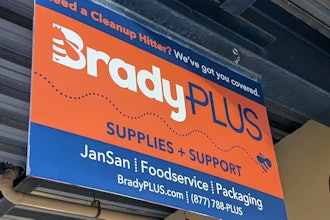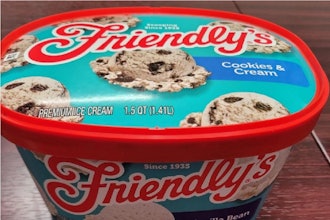It is no surprise that consumers show loyalty and preference for brands that understand their concerns about health and wellness. Organic and natural foods are preferred by consumers all around the world for their health benefits — and many consumers do not mind the premium prices that come along with these products. While these consumer preferences offer an opportunity for food brands to innovate and expand, food suppliers, distributors and retailers are all challenged to extend the shelf life of natural and organic foods without compromising the real taste, texture or color of these goods.
For hundreds of years, people have turned to a range of traditional methods to keep foods fresh — methods such as salt curing, freezing or the addition of chemical preservatives. While highly-processed foods and preservatives work well with complex supply chains, they clearly are not favored by legions of consumers who prefer not only fresh foods, but transparency when it comes to their food sources.
Today, food suppliers can turn to different processing and packaging methods to extend the shelf life of their products. Solutions such as high pressure processing (HPP) and modified atmosphere packaging (MAP) can keeps products fresh and preservative-free.
A flexible package that incorporates oxygen-absorbing technology is another option that is offering organic brands a solution to extending shelf life. This technology significantly reduces the level of oxygen within a package that leads to spoilage. In fact, this oxygen-absorbing technology has the potential to double the shelf life of food products in an array of categories such as liquid-based soups, sauces, dips, protein bars, wet pet foods and organic foods.
Embedded Technology
Incorporated as a layer within packaging film, this oxygen absorber keeps products fresh for a longer period of time while protecting them from oxygen degradation. It enables the color, texture and taste to remain the same. Made of polyolefins (PP/PE) that are activated with an iron-based formulation, this film layer protects food from outside air that may penetrate the interior of the packaging, while at the same time absorbing the oxygen that remains within sealed packaging.
When this oxygen absorber is introduced, the heat treatment from the retort process has a less degrading impact on foods. Oxygen molecules that are activated during the process that would normally begin to degrade food within the packaging, instead can be absorbed. This means nutrients like Vitamin C and thiamine, as well as pigments such as chlorophyll and lycopene — which give food its fresh, appealing color — remain largely intact.
More Life for Your Product, Better Life for Your Brand
In today’s ever-changing marketplace, establishing consumer loyalty is no easy task. More than ever, consumers are challenging brands to provide information on the origin and ingredients that go into their foods. Brand owners must be transparent in order to establish consumer trust and instill confidence in their customers that the goods they provide are of the best quality.
According to a 2016 Food and Health survey by the International Information Council (IFIC), close to 50 percent of consumers look at ingredients to make a purchasing decision — and many associate healthy foods to options that have limited or no artificial ingredients or preservatives.[1] This demand has led to 4,591 new products that carry a USDA-approved “no additives or preservatives” label.
Packaging solutions that protect food’s natural flavors, textures and vitamins are a solution for these wellness-oriented brands. Such packaging eliminates the need for added sodium, spices and preservatives, all of which can be turn-offs for clean-eating consumers.
Keep it Safe, Fresh and Innovative
In the face of consumer demand for fresh foods, there are also important regulatory practices food suppliers, distributors and retailers must keep in mind. The Food Safety Modernization Act (FSMA) established important guidelines that include employee training in sanitary practices, equipment cleaning and temperature control. With all this in mind, it is crucial that professionals implement packaging and processing solutions that supplement FSMA guidelines and keep their products safe, fresh and innovative.
To help manufacturers implement a solution that aligns with consumer demand, it is important for food processors to get a packaging assessment for their specific application. Such an assessment can help determine the best technologies that can increase the shelf life of natural products that are particularly vulnerable to spoilage.
[1] http://www.foodinsight.org/sites/default/files/2016-Food-and-Health-Survey-Report_FINAL1.pdf






















